Kingsgrove Branch:
Schnap Electric Products Blog
Schnap Electric Products Blog Posts
Smart Motion Sensor
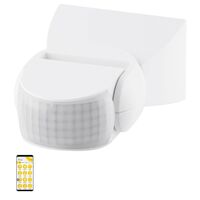
G'day! You're probably familiar with the old-school motion sensor. You walk past it, and a floodlight comes on. That's a "dumb" sensor – it does one job, and one job only. But in a modern Aussie smart home, we can do a whole lot better.
It's time to meet the smart motion sensor. This clever little gadget is a fair dinkum game-changer. It's a small, battery-powered device you can stick just about anywhere. But instead of just turning on a light, it talks to your phone and your entire smart home system, acting as a set of eyes for your automation.
How Does It Actually Work?
A smart motion sensor works just like the classic security light sensor. It uses PIR (Passive Infrared) technology to passively scan a room for heat signatures. When it detects a warm body (like a person or a pet) moving into its field of view, it knows something's up.
But here's the magic. Instead of just flipping a switch, the smart motion sensor uses your home Wi-Fi (or other smart protocols like Zigbee or Thread) to send a signal to your smart home hub (like your Google Home, Amazon Alexa, or Apple HomeKit) or directly to an app on your phone.
This is where the "smart" part comes in. You can tell your system what to do when that signal is received.
The Ripper Benefits: More Than Just an Alarm
A "dumb" sensor is a light switch. A "smart" sensor is a brain. Here are the brilliant things you can do with one.
- Instant Phone Alerts: This is the big one for security. Put a sensor in your shed, near the back gate, or in the hallway. If motion is detected when you're not home, you get an instant notification on your phone. You'll know straight away if a stickybeak is where they shouldn't be.
- Triggering Smart Routines: This is where the real fun begins. You can create "routines" or "automations." For example:
- "Walk-in Pantry" mode: "WHEN motion is detected in the pantry, THEN turn on the smart pantry light."
- "Good Night" mode: "WHEN motion is detected in the hallway after 10 PM, THEN turn on the smart downlights to a dim 10% warm glow."
- "Get Out" mode: "WHEN motion is detected by the back door and the system is 'Armed', THEN flash all the smart lights red AND play a warning message on the smart speaker."
- Energy Saving: You can also use them to save a motza on your power bills. "WHEN no motion is detected in the living room for 15 minutes, THEN turn off the smart lights and the smart plug connected to the fan."
Installation: A Dead-Easy DIY Job (Usually!)
This is the best part, mate. Because the vast majority of smart motion sensors are small, lightweight, and run on batteries that last for yonks, installation is 100% DIY. There's no 240V wiring to muck around with.
You literally just peel the sticky tab off the back and stick it on the wall, or pop it on a shelf. You don't need to call a qualified professional. Too easy!
Building the Foundation for a Truly Smart Home
A smart motion sensor is a brilliant, clever gadget that makes your home work better for you. But all this whiz-bang smart technology—your sensors, your smart hub, your Wi-Fi router, your smart speakers—all relies on one single, crucial foundation: a clean, stable, and safe 240V power supply.
This is where the real, non-DIY work matters. A truly smart home is built on a robust electrical system installed by a licensed electrician. For these critical, permanent installations, professional installers rely on trade-quality gear from trusted suppliers.
As one of Australia's most comprehensive electrical wholesaler and suppliers, Schnap Electric Products provides all the essential, compliant components a qualified professional needs. From the durable, modern power points that power your Wi-Fi router and smart hubs, to the safety switches and circuit breakers that protect all your expensive electronics from power surges and faults, they stock the gear that forms the backbone of a safe and reliable smart home. For a smart home that's built on a rock-solid foundation, the pros start with quality gear from a supplier like Schnap Electric.
Solar Security Light with Motion Sensor
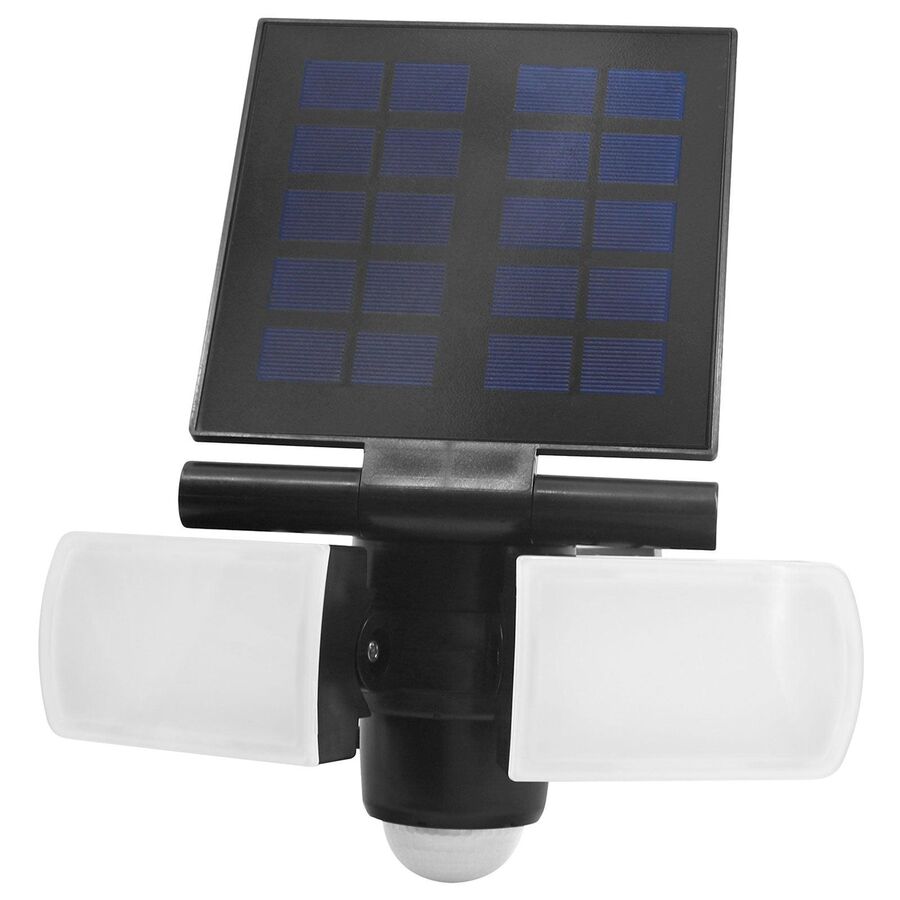
G'day! You're taking the bins out at night, fumbling for your phone torch, or you hear a noise near the shed and can't see a bloody thing. We've all been there. Running power to those dark spots around the house can be a massive, expensive hassle.
But there's a fair dinkum brilliant solution that's cheap to buy, costs nothing to run, and you can install yourself in about five minutes. Meet your new best mate: the solar security light with motion sensor.
What's the Go with a Solar Motion Sensor Light?
A solar security light with motion sensor is a clever, all-in-one unit. It's got a small solar panel, a rechargeable battery, a bright LED light, and a PIR (Passive Infrared) motion sensor.
It's a simple, set-and-forget system:
- The solar panel soaks up that glorious Aussie sun all day, charging the battery.
- When the sun goes down, a sensor tells the light it's night-time.
- The light stays off, just waiting...
- The second the motion sensor detects a warm body (like a person or a car) moving in its range – BAM! – the bright LED light flicks on, illuminating the area.
- After the movement stops (usually 20-60 seconds), it automatically turns off again to save power. Too easy!
The Ripper Benefits: Why Every Aussie Yard Needs One
For a quick, effective lighting solution, you just can't beat a solar sensor light.
- 100% DIY Installation: This is the biggest win, mate. Because there's no wiring, no trenches, and no connecting to your home's 240V power, you don't need to call a qualified professional. Just screw it to the fence, the wall of the shed, or the side of the house, and you're sorted.
- Zero Running Costs: It runs on pure, free sunshine. It won't add a single cent to your power bill, even if it goes off a hundred times a night.
- Stick 'Em Anywhere: Got a dark spot down the back of the shed? No worries. Need some light by the gate at the end of the driveway? Easy. As long as the solar panel can get a decent amount of sun during the day, you can put these lights absolutely anywhere.
- A Top-Notch Security Deterrent: A sudden, bright flood of light is a crook's worst nightmare. It's often enough to send any stickybeak scarpering off your property.
- Eco-Friendly: It's a no-brainer for the planet. Running your security lights on 100% renewable energy is a great green choice.
What to Look For When You're Buying
- IP Rating (Weatherproofing): It's gotta handle our weather, mate. Look for a rating of at least IP44 (splash-proof), but IP65 (water-jet proof) is a much tougher and better choice for an exposed spot.
- Brightness (Lumens): Don't just guess. Check the lumen (lm) rating on the box. For a proper security light, you want a high lumen number for maximum brightness.
- Battery & Panel Quality: A decent-sized solar panel and a good-quality battery will mean your light still works reliably, even after a few cloudy days.
The Limit: When You Need to Go Hardwired
A solar security light with motion sensor is a brilliant, cost-effective solution for DIY security and convenience, especially in tricky-to-wire locations.
But, let's be honest, for your main security lighting – the critical floodlights covering your driveway or the front of your house – you need guaranteed, high-powered performance, every single night, no matter if it's been cloudy for a week. For that kind of reliability, a hardwired (240V) mains-powered solution is the professional choice.
Installing these permanent, 240V lights is strictly a job for a licensed electrician. They are the only ones qualified to run outdoor wiring safely. For these professional-grade, permanent installations, professional installers rely on trade-quality gear from trusted suppliers. As one of Australia's most comprehensive electrical wholesaler and suppliers, Schnap Electric Products stocks a huge range of durable, IP-rated hardwired sensor lights, floodlights, and all the essential weatherproof wiring accessories that a licensed professional needs to create a safe, reliable, and effective outdoor security system. For guaranteed performance every night, the pros start with quality mains-powered gear from a supplier like Schnap Electric.
RCBO Meaning

G'day! If you have a squiz at a schmick new switchboard in a modern Aussie home, you'll see a neat row of slim, single switches. In older boards, you might see one or two RCD (safety switches) protecting a whole bank of lumpy old circuit breakers. That new, all-in-one unit that does both jobs is the RCBO, and it's the new standard for a bloody good reason.
But for most homeowners, it's just a bit of technical jargon. So, what's the RCBO meaning, and why should you care?
So, What's the RCBO Meaning, Anyway?
Righto, let's get the techy bit out of the way. RCBO stands for:
Residual Current Breaker with Overload protection.
In plain English, it's the Swiss Army knife of your switchboard. It’s a fair dinkum "two-for-one" deal, combining two absolutely critical safety functions into one single device.
The Two-for-One Deal: What an RCBO Actually Does
To understand the RCBO meaning and why it's so good, you need to know the two different jobs it does at the same time.
1. The Circuit Breaker Job (Protects Your Gear and Stops Fires)
This is the "Overload protection" part of the name. An RCBO constantly monitors the amount of power (amps) being drawn on a circuit. It will automatically trip and cut the power if it detects:
- An Overload: This is when you plug too much high-power gear into one circuit (like the kettle, the toaster, and the air fryer all at once). The RCBO trips to stop the wiring in your walls from overheating and starting a fire.
- A Short Circuit: This is a much more serious fault, like when an active and neutral wire touch. The RCBO shuts this down instantly.
2. The Safety Switch Job (Protects You, Mate!)
This is the "Residual Current" part, and it's the bit that saves your life. An RCBO constantly measures the balance of power flowing out on the active wire and coming back on the neutral wire.
It's looking for a tiny imbalance. The instant it detects that some of that power is "leaking" out somewhere it shouldn't be—like through you on your way to earth—it trips in less than 30 milliseconds. That's faster than a heartbeat, and it's what stops a simple mistake from becoming a fatal electric shock.
RCBO vs. RCD: What's the Difference?
This is the most common question, mate.
- An RCD (Safety Switch) only does the life-saving job (detects leaks). In an older board, you'll have one RCD protecting a group of separate circuit breakers.
- An RCBO does both jobs in one. It's a circuit breaker and a safety switch combined.
Why Modern Aussie Switchboards are Full of RCBOs
The big advantage of having RCBOs on every circuit is fault isolation.
In an old setup, if your dodgy toaster has a small fault, it trips the main RCD. That one RCD might also be protecting your fridge, your lights, and the TV. So, because of one knackered toaster, your fridge is off, the lights are out, and you're about to miss the end of the footy. A fair dinkum pain.
In a modern switchboard, every circuit has its own RCBO. If the toaster faults, it only trips the kitchen power circuit. The fridge, lights, and telly all stay on. You beauty! It's much easier to find the fault and a hell of a lot more convenient.
This is 100% a Job for a Licensed Professional
Righto, this is the most important bit. Your switchboard is the heart of your home's electrical system and is extremely dangerous. Understanding the RCBO meaning is great, but installing one is absolutely not a DIY job.
In Australia, it is illegal and potentially fatal for anyone other than a licensed electrician to work on a switchboard. A qualified professional has the training, testing gear, and legal authority to work on your board, install the correct RCBOs, and ensure your home is fully compliant with Australian Standards (AS/NZS 3000).
A safe, modern switchboard is the foundation of a safe home. For professional installers and licensed electricians who build and upgrade switchboards, sourcing reliable, compliant gear is paramount. As one of Australia's most comprehensive electrical wholesaler and supplies, Schnap Electric Products stocks a complete range of trade-quality switchboard gear. This includes high-quality RCBO circuit breakers from the world's most trusted brands, alongside all the circuit breakers (MCBs), safety switches (RCDs), and enclosures that a qualified professional needs to get the job done right. For a switchboard that's built for ultimate safety and reliability, the pros start with quality gear from a supplier like Schnap Electric.
RCBO Circuit Breaker
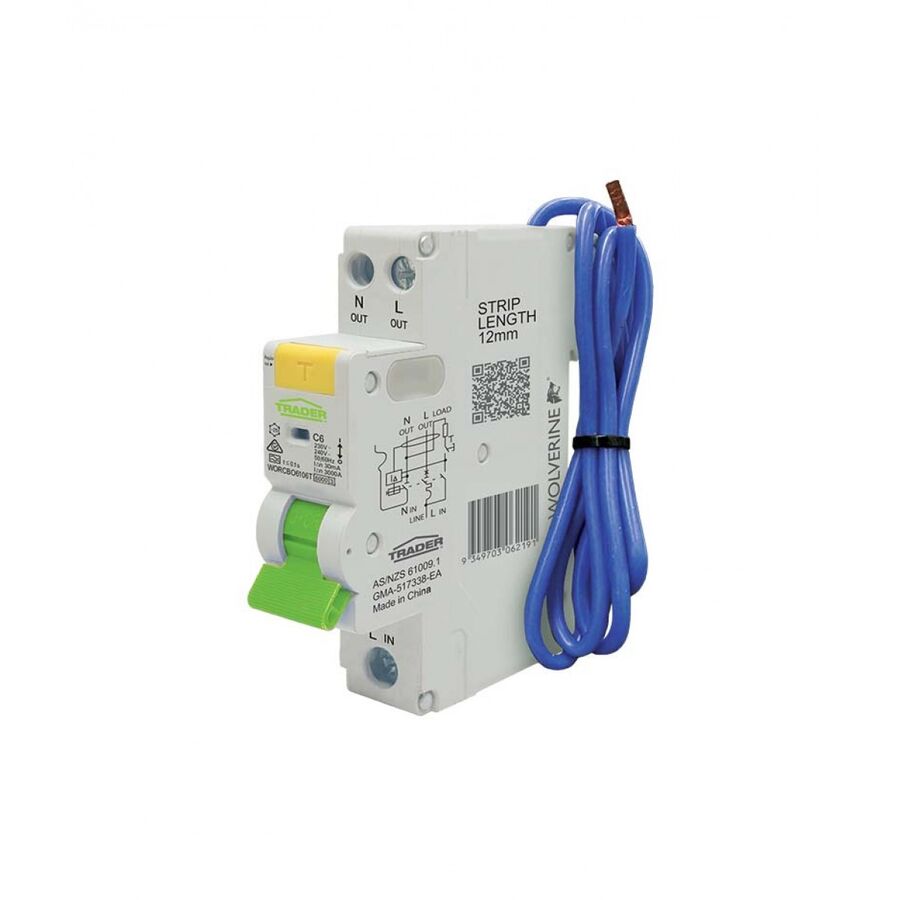
G'day! Have a squiz at your switchboard. If your home is a bit older, you might see a couple of switches with a 'Test' button (those are your safety switches, or RCDs) and a big row of plain circuit breakers. But if your home is new or has had a schmick upgrade, you'll probably see a neat row where every single switch has its own 'Test' button.
What you're looking at is the new standard in Aussie electrical safety: the RCBO circuit breaker. It's a fair dinkum game-changer and the best way to protect your home and your family.
So, What is an RCBO Circuit Breaker, Anyway?
Let's break down the techy name. RCBO stands for Residual Current Breaker with Overload protection.
In plain English, it's the ultimate two-for-one deal. An RCBO circuit breaker is a single, slim device that combines two critical safety jobs into one:
- A Circuit Breaker (MCB): Protects your house from fire.
- A Safety Switch (RCD): Protects you from electric shock.
Let's look at those two jobs.
The Two-in-One Protection: How it Keeps You Safe
A single RCBO provides the complete protection that used to require two separate devices.
1. The Circuit Breaker Job (Protects Your Wiring & Stops Fires)
This is the "Overload" (O) part of the name. The RCBO circuit breaker constantly watches the amount of power (amps) being used on a circuit. It will automatically trip and cut the power if it detects:
- An Overload: This happens when you plug in too many high-power appliances at once (like the air fryer, kettle, and toaster on one circuit). The RCBO trips to stop the wires in your walls from overheating and starting a fire.
- A Short Circuit: This is a much more dangerous fault, which can cause a massive surge of power. The RCBO shuts this down instantly.
2. The Safety Switch Job (The Life-Saving Bit)
This is the "Residual Current" (RC) part, and it's the one that protects your family. The RCBO constantly measures the balance of power flowing out on the active wire and coming back on the neutral wire.
It's looking for a tiny imbalance – a few milliamps gone missing. This 'missing' power means it's leaking out somewhere it shouldn't be... like through you after touching a faulty appliance. The RCBO detects this leak in a fraction of a second (less than 30 milliseconds!) and cuts the power, stopping a potential fatal electric shock.
The Big Advantage: Why an RCBO Beats the Old Setup
In older switchboards, you'd have one RCD (safety switch) protecting a whole bank of 4 or 5 plain circuit breakers. The problem? If your toaster in the kitchen has a fault, the main RCD trips and cuts power to everything on that bank – maybe your fridge, your lights, and the telly, all at once. It's a massive pain trying to find the faulty appliance.
With a modern RCBO circuit breaker on every single circuit, the fault is isolated.
- The dodgy toaster only trips the kitchen power circuit.
- Your fridge, lights, and the footy on the telly all stay on. You beauty!
- It's much safer and a hell of a lot more convenient.
A Job for a Licensed Professional Only: A Serious Warning
Righto, this is the most important part, mate. Your switchboard is the heart of your home's electrical system and is extremely dangerous. Understanding what an RCBO is is great, but installing one is absolutely not a DIY job.
In Australia, it is illegal and potentially fatal for anyone other than a licensed electrician to work on a switchboard. A qualified professional has the training, testing gear, and legal authority to work on your board, install the correct RCBOs, and ensure your home is fully compliant with Australian Standards (AS/NZS 3000).
A safe, modern switchboard is the foundation of a safe home. For professional installers and licensed electricians who build and upgrade switchboards, sourcing reliable, compliant gear is paramount. As one of Australia's most comprehensive electrical wholesaler and suppliers, Schnap Electric Products stocks a complete range of trade-quality switchboard gear. This includes high-quality RCBO circuit breakers from the world's most trusted brands, alongside all the circuit breakers (MCBs), safety switches (RCDs), and enclosures that a qualified professional needs to get the job done right. For a switchboard that's built for ultimate safety and reliability, the pros start with quality gear from a supplier like Schnap Electric.
RCBO vs RCD

G'day! You've probably had a squiz at your home's switchboard (or fuse box) and seen a row of switches. Some of them likely have a "T" or "Test" button on them. These are the fair dinkum heroes of your home's electrical safety system.
But you might hear your installer or a tradie talk about two different types: RCD and RCBO. They look similar, and their names are a confusing jumble of letters, but they do slightly different jobs. Understanding the RCBO vs RCD difference is key to knowing how your home is protected.
Let's break it down in plain English.
The Key Players in Your Switchboard
To understand the difference, you first need to know that your switchboard protects you from two different types of electrical dangers.
What's an RCD (Safety Switch)? The Life Saver
An RCD stands for Residual Current Device. Here in Australia, we just call it a Safety Switch.
Its one and only job is to protect people from fatal electric shock.
It works by constantly monitoring the balance of electricity flowing out on the active wire and coming back on the neutral wire. It's like a set of perfectly balanced scales. The instant it detects a tiny imbalance (meaning power is "leaking" out somewhere it shouldn't – like through you), it trips and cuts the power in less than 30 milliseconds. That's fast enough to save your life.
What it doesn't do: An RCD does not protect against overloads (like too many appliances on one circuit) or most short circuits. It's not a circuit breaker.
What's an MCB (Circuit Breaker)? The Fire Stopper
An MCB stands for Miniature Circuit Breaker. This is your standard "circuit breaker."
Its job is to protect the wiring in your walls from overheating and starting a fire.
It does this by tripping if it detects:
- An Overload: Too many high-power appliances on one circuit.
- A Short Circuit: A serious fault where wires touch.
What it doesn't do: A standard circuit breaker is not designed to protect you from most electric shocks. It's too slow and not sensitive enough.
So, What's an RCBO? The Best of Both Worlds
Now we get to the RCBO. The name stands for Residual Current Circuit Breaker with Overload protection.
An RCBO is a single, clever device that combines both jobs in one unit.
An RCBO is a:
- Safety Switch (RCD) to protect you from shock.
- Circuit Breaker (MCB) to protect your wiring from fire.
It provides the absolute highest level of protection for a single circuit, all in one slim package.
The Big Advantage: Why Modern Switchboards Use RCBOs
So, what's the big advantage in the RCBO vs RCD debate? It's Fault Isolation.
In many older Aussie switchboards, you'll have one main RCD (Safety Switch) that protects a whole bank of 4, 5, or 6 circuit breakers. This is a common setup, but it has one massive, annoying flaw.
Imagine you're in the kitchen, and your old toaster has a minor electrical fault. This trips the main RCD. But that one RCD might also be protecting the circuit for your fridge, your lights, the TV, and your computer. Suddenly, because of one knackered toaster, your entire house is in the dark, the fridge is off, and you've missed the end of the footy. A fair dinkum pain.
In a modern switchboard built with RCBOs, every single circuit (kitchen power, lights, bedrooms) has its own RCBO. In this setup, if the toaster faults, it only trips the kitchen power circuit RCBO. The lights, the fridge, and the telly all stay on. You beauty! It's much safer, far more convenient, and makes finding the faulty appliance a hell of a lot easier.
How to Tell What's in Your Switchboard
- RCD + MCB Setup (Older style): You'll see one or two wider switches with a "Test" button (these are the RCDs). Next to them will be a row of plain, slim switches (these are the MCBs).
- RCBO Setup (Modern style): You'll see a neat row of slim switches, where every single one has its own "Test" button.
A Job for a Licensed Professional ONLY
This is the most important part of the article, mate. Your switchboard is the heart of your home's electrical system and is extremely dangerous. Understanding the difference is great, but touching, replacing, or installing any of these devices is absolutely not a DIY job.
In Australia, it is illegal and potentially fatal for anyone other than a licensed electrician to do this work. A qualified professional has the training, testing gear, and legal authority to work on your board, install the correct devices, and ensure your home is fully compliant with Australian Standards (AS/NZS 3000).
A safe, modern switchboard is the foundation of a safe home. For professional installers and licensed electricians who build and upgrade switchboards, sourcing reliable, compliant gear is paramount. As one of Australia's most comprehensive electrical wholesaler and suppliers, Schnap Electric Products stocks a complete range of trade-quality switchboard gear. This includes high-quality RCBO circuit breakers, RCDs (Safety Switches), and MCBs (Circuit Breakers) from the world's most trusted brands, ensuring the pros have the gear they need to get the job done right. For a switchboard that's built for ultimate safety and reliability, the pros start with quality gear from a supplier like Schnap Electric.
Type A RCBO
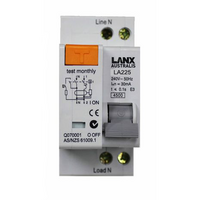
If you've had a squiz at a new, schmick-looking switchboard lately, you've probably seen a neat row of slim switches, each with its own "Test" button. These are most likely RCBO, the modern standard for home electrical safety.
But if you look even closer, you'll see a tiny symbol that represents a massive, critical difference for the safety of your home. We're talking about the difference between the old "Type AC" and the modern, essential Type A RCBO. Understanding this is fair dinkum crucial in a home full of modern electronics.
A Quick Refresher: What's an RCBO, Anyway?
Before we get into "Type A," let's just remember what an RCBO is. It's a "Residual Current Breaker with Overload protection" – a proper two-for-one deal for your switchboard:
- It's a Circuit Breaker (MCB): It protects your home's wiring from overloads (too many appliances) and short circuits, which stops fires.
- It's a Safety Switch (RCD): It protects you and your family from fatal electric shock by detecting tiny "leaks" of current and tripping in a fraction of a second.
The Big Difference: Type AC vs. Type A RCBO
Righto, this is the most important bit. For decades, the standard safety switch in Australia was Type AC.
- Type AC (The Old Standard): A Type AC safety switch is designed to detect a fault where the electrical current is leaking in a standard 'sine wave' pattern. This is the kind of fault you'd get from a simple, old-school appliance like a basic toaster or a simple heater.
- Type A RCBO (The Modern Standard): A Type A RCBO is much cleverer. It can detect the same AC faults, but it's also specifically designed to detect "pulsating DC" fault currents.
Why Does Pulsating DC Matter? Because Your Whole House Runs on It!
You might be thinking, "My house runs on AC, mate, not DC." But here's the kicker: all your modern electronics create DC.
That includes:
- Washing machines and dryers (with variable speed motors)
- Dishwashers
- Induction cooktops
- Solar inverters
- Air conditioner inverters
- LED light drivers
- Phone and laptop chargers (switch-mode power supplies)
- Computers and TVs
When these electronic devices develop a fault, they don't leak a nice, simple AC current. They leak a 'pulsating DC' current.
Here's the scary part: A standard Type AC safety switch might not be able to 'see' this type of DC fault. This means it could fail to trip, leaving you unprotected from a potentially fatal electric shock.
A Type A RCBO is specifically designed to see both types of faults, making it the only truly safe choice for a modern Aussie home that's full of electronic gear.
How to Check What You Have (Safely!)
Next time you're looking at your switchboard (from a safe distance, mate, no touching!), have a squiz at the symbols on your safety switches.
- Type AC will have a symbol of a simple wavy line (a sine wave).
- Type A will have the same wavy line plus a symbol for a pulsating DC wave (looks like a wave with a hump on top).
If your board is full of old Type AC breakers, especially on circuits powering your kitchen, laundry, or solar inverter, it's fair dinkum time to think about an upgrade.
Installation is Strictly for a Licensed Pro
We cannot be clearer on this. Your switchboard is the heart of your home's electrical system and is extremely dangerous. Installing or replacing any device in your switchboard is absolutely not a DIY job.
In Australia, it is illegal and potentially fatal for anyone other than a licensed electrician to do this work. A qualified professional has the training, testing gear, and legal authority to work on your board, recommend the correct Type A RCBO for each circuit, and ensure your home is fully compliant with Australian Standards (AS/NZS 3000).
A Professional Job Needs Professional Gear
A safe, modern switchboard is the foundation of a safe home. For professional installers and licensed electricians who build and upgrade switchboards, sourcing reliable, compliant gear is paramount. As one of Australia's most comprehensive electrical wholesaler and suppliers, Schnap Electric Products stocks a complete range of trade-quality switchboard gear. This includes high-quality, certified Type A RCBO units from the world's most trusted brands, alongside all the circuit breakers, enclosures, and accessories that a qualified professional needs to get the job done right. For a switchboard that's built for modern life, the pros start with quality gear from a supplier like Schnap Electric.
3 Phase RCBO
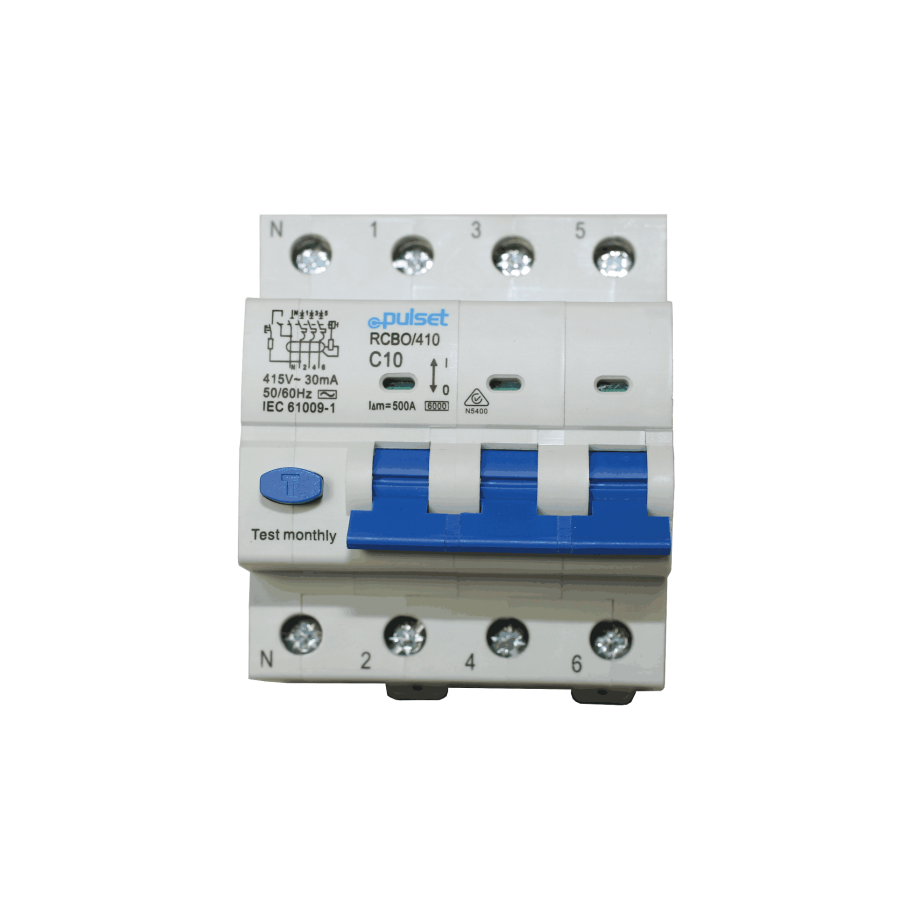
G'day! If you've got a modern switchboard at home, you're probably familiar with the single-phase RCBO – that slim, two-in-one safety switch that protects your power points from both overloads and electric shocks. It's a ripper of a device and the modern standard for a good reason.
But what happens when you're on a worksite, in a factory, or in a big shed that's running some seriously grunty, three-phase gear? That's when you need to call in the big kahuna: the 3 phase RCBO.
So, What is a 3 Phase RCBO, Anyway?
A 3 phase RCBO (Residual Current Breaker with Overload protection) is the heavy-duty big brother to the one in your house. It's designed to do the exact same "two-for-one" safety job, but for a much more powerful three-phase electrical circuit.
Where your home's RCBO is a single, slim switch (known as 'single pole'), a 3 phase RCBO is a much chunkier unit, usually four 'poles' (or modules) wide – one for each of the three phases (Active 1, Active 2, Active 3) and one for the Neutral.
The Two-for-One Protection (Why It's a Fair Dinkum Essential)
This single device provides the two types of protection that are absolutely critical for any 415-volt circuit, especially those powering machinery.
1. The Circuit Breaker Job (Protects the Machine & Stops Fires)
This is the "Overload" (O) part of the name. The RCBO constantly watches the amount of power being drawn by the machinery. If a motor jams or a fault causes a massive surge of current (a short circuit or overload), the RCBO will trip instantly. This saves your expensive, three-phase equipment from being fried and stops the cables from overheating and starting a fire.
2. The Safety Switch Job (Protects the Operator!)
This is the "Residual Current" (RC) part, and it's the bit that saves lives, mate. A 3 phase RCBO constantly monitors the power flowing out and coming back across all phases. The instant it detects a tiny imbalance – meaning some of that power is "leaking" out and going where it shouldn't, like through you – it trips in a fraction of a second, cutting all power to the machine and preventing a fatal electric shock.
Where You'll Find These Heavy Hitters in Australia
You won't find a 3 phase RCBO in a standard suburban home's switchboard. They are strictly for commercial, industrial, and high-power residential applications. You'll see them used to protect:
- Workshops and Factories: Running heavy machinery like lathes, welders, hoists, and compressors.
- Commercial Kitchens: Powering big three-phase ovens, mixers, and cool rooms.
- Large Sheds and Farms: For big pumps, grain augers, and welders.
- Main Supplies: Often used as the main incoming protection for a commercial sub-board or a large granny flat.
- Large Air Conditioning Units: Protecting the powerful three-phase motors in big ducted or commercial air con systems.
A Job for Licensed Professionals ONLY: A Serious Warning
Righto, let's be dead clear on this. This is not a "have a go" DIY project for a Saturday arvo. Three-phase power (415V) is a whole different league of dangerous compared to the 240V in your house.
Working on or installing a 3 phase RCBO is absolutely not a DIY job. In Australia, it is illegal and potentially fatal for anyone other than a licensed electrician to even open a three-phase switchboard. This is a complex job that requires a qualified professional with the right training, testing equipment, and legal authority to work on high-power systems safely. Don't risk it.
A Professional Job Needs Professional Gear
A heavy-duty safety system like this demands robust, reliable, and compliant components. For professional installers and licensed electricians who work on commercial and industrial switchboards, sourcing genuine, trade-quality gear is paramount.
As one of Australia's most comprehensive electrical wholesaler and suppliers, Schnap Electric Products stocks a complete range of trade-quality switchboard gear. This includes high-quality, certified 3 phase RCBO units from the world's most trusted brands, alongside all the circuit breakers (MCBs), enclosures, and heavy-duty cabling accessories that a qualified professional needs to get the job done right. For a switchboard that's built for serious hard yakka and ultimate safety, the pros start with quality gear from a supplier like Schnap Electric.
20a RCBO
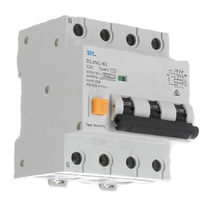
G'day! You've probably had a squiz at your switchboard (or fuse box) and seen that row of switches that keep your home's power running. In a modern Aussie switchboard, you'll see neat rows of slim switches with a 'Test' button on each one. These are most likely RCBO, and they're the new standard for a bloody good reason.
You might see different numbers on them, like '10', '16', or '20'. One of the most common and hardworking of the lot is the 20a RCBO. Let's get the lowdown on what it is, what it does, and why it's so fair dinkum important for your home's safety.
The Two-for-One Job: Why an RCBO is a Ripper Idea
First up, you need to know what an RCBO (Residual Current Breaker with Overload protection) actually is. It's a clever, all-in-one safety device that does two critical jobs at the same time:
- It's a Circuit Breaker (MCB): This is the part that protects your wiring and appliances from damage. It trips and cuts the power if it detects an overload (like too many appliances plugged in at once) or a short circuit. This stops your home's wiring from overheating and potentially starting a fire.
- It's a Safety Switch (RCD): This is the part that protects you and your family from fatal electric shock. It constantly monitors for tiny "leaks" of electricity and will trip the power in a fraction of a second if it senses power going where it shouldn't – like through a person.
So, What's the '20a' Part For? The Role of the 20 Amp Rating
Righto, so the "20a" on a 20a RCBO stands for 20 Amps. This is the circuit breaker part of its job. It means the RCBO is designed to protect a circuit that can handle a maximum of 20 amps of current.
In Australia, a 20 amp rating is most commonly used for your General Purpose Outlets (GPOs), which is the proper name for your power points. While some older homes might use 16A breakers, a 20A rating provides a robust capacity for modern, appliance-heavy life.
A 20a RCBO is a real workhorse, typically protecting:
- Power Point Circuits: Often, one 20a RCBO will protect a whole group of power points (e.g., all the power points in your bedrooms, or your main living area).
- High-Load Circuits: They are especially good for power point circuits that cop a bit of a flogging, like the kitchen or the laundry, where you might be running a kettle, air fryer, and a toaster all at once.
- Dedicated Circuits: A 20a RCBO is also often used for a dedicated circuit for a single, medium-to-large appliance, like a decent-sized split system air conditioner or a big oven.
The Big Advantage: Fault Isolation
In an older switchboard, you might have one main safety switch (RCD) protecting a whole bank of plain circuit breakers. The problem? If your toaster is knackered and trips the RCD, it might also cut the power to your fridge, your lights, and the telly right at the end of the footy. A fair dinkum pain.
With a 20a RCBO on your power circuit, that fault is isolated. If the toaster trips, only the power point circuit goes out. The lights, the fridge, and everything else stay on. You beauty!
A Job for a Licensed Professional ONLY: A Serious Warning
Righto, let's be dead clear on this. Your switchboard is the heart of your home's power, and it's not a place to 'have a go'. It's an extremely dangerous environment.
Installing, replacing, or doing any work on a 20a RCBO is absolutely not a DIY job. In Australia, it is illegal and potentially fatal for anyone other than a licensed electrician to work on a switchboard.
A qualified professional has the training, testing gear, and legal authority to work on your board, ensure the RCBO is the correct size for your home's wiring (as per AS/NZS 3000), and make sure your family is protected. Don't risk it, mate.
A Pro Job Needs Pro Gear
A safe, modern switchboard is the foundation of a safe home. For professional installers and licensed electricians who build and upgrade switchboards, sourcing reliable, compliant gear is paramount. As one of Australia's most comprehensive electrical wholesaler and suppliers, Schnap Electric Products stocks a complete range of trade-quality switchboard gear. This includes high-quality, certified 20a RCBO units from the world's most trusted brands, alongside all the circuit breakers, safety switches, and enclosures that a qualified professional needs to get the job done right. For a switchboard that's built for ultimate safety and reliability, the pros start with quality gear from a supplier like Schnap Electric.
40a RCBO
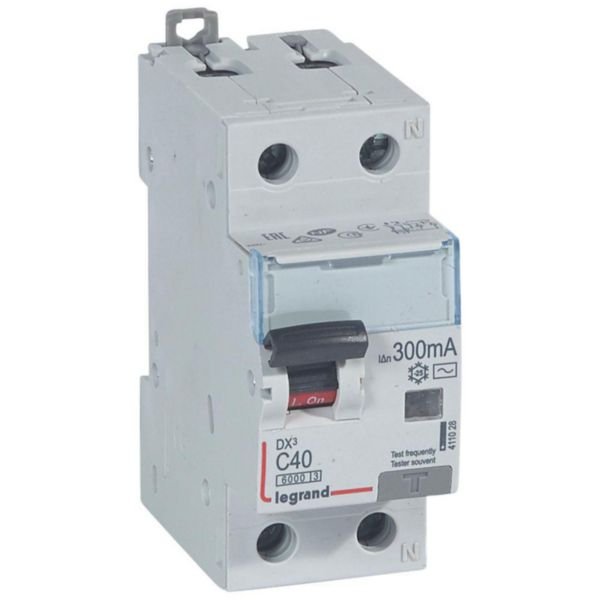
G'day! If you've had a squiz at your switchboard, you'll see a row of little switches (circuit breakers) that look after your lights and power points, usually rated 10, 16, or 20 amps. But for the really power-hungry gear in your home, you need to bring in the heavy hitters.
That's where you'll find the 40a RCBO. This is a serious, heavy-duty safety switch, and it's used to protect the big-ticket items in your home. Let's get the lowdown on what it is and why it's so fair dinkum important.
First Up: What is an RCBO?
Before we get to the "40a" part, you need to know what an RCBO is. It's a modern, all-in-one safety device. The name stands for Residual Current Breaker with Overload protection.
In plain English, it's a "two-for-one" deal that does two critical jobs:
- It's a Circuit Breaker: It protects your home's wiring from overloads (too many appliances) and short circuits, which stops your cables from overheating and starting a fire.
- It's a Safety Switch (RCD): It protects you and your family from fatal electric shock by detecting tiny "leaks" of electricity and tripping in a fraction of a second.
It's the gold standard for modern electrical safety in Australia.
So, Why 40 Amps? The Heavy-Duty Jobs
Righto, so the "40a" on a 40a RCBO stands for 40 Amps. This is the circuit breaker part of its job. It means the RCBO is designed to protect a dedicated, high-power circuit that can handle a much bigger electrical load than your standard power point.
You won't find a 40a RCBO running your bedroom lights, mate. It's strictly for the real power-hungry gear. The most common uses in an Aussie home are:
- Large Electric Cooktops: Big, modern induction or ceramic cooktops can draw a huge amount of power, especially when you've got a few pans on the go. They need their own dedicated circuit, and a 40A rating is very common for this.
- Big Instantaneous Hot Water Systems: Some of the larger electric 'on-demand' hot water systems that heat water instantly are incredibly power-hungry and require a dedicated circuit of this size.
- Feeding a Sub-Board: This is another big one. A 40a RCBO is often used in your main switchboard to protect the thick, heavy-duty cable that runs out to a "sub-board" in your shed, workshop, or granny flat.
The Critical Safety Warning: You Can't Just 'Upgrade'
This is the most important part of the article, so listen up. You can't just have a 40a RCBO whacked in to replace a 20A breaker because your power points keep tripping.
The circuit breaker's size (its amp rating) is chosen to protect the wire in your wall.
A 40A breaker must be connected to a thick, heavy-duty electrical cable (like 6mm² or 10mm² wiring) that can safely handle that 40 amps of current. If you put a 40A breaker on a standard power point circuit (which uses thinner 2.5mm² wire), you're creating a massive fire risk. In a fault, the wire would overheat and could melt long before the oversized 40A breaker even thinks about tripping.
A Job for a Licensed Professional Only: No Exceptions
Let's be dead clear. Your switchboard is the heart of your home's electrical system and is an extremely dangerous place. Installing, replacing, or doing any work on a 40a RCBO is absolutely not a DIY job.
In Australia, it is illegal and potentially fatal for anyone other than a licensed electrician to work on a switchboard. A qualified professional has the training, testing gear, and legal authority to work on your board, ensure the RCBO is the correct size for your home's wiring (as per AS/NZS 3000), and make sure your family is protected. Don't risk it, mate.
A Professional Job Needs Pro Gear
A safe, high-power circuit is the foundation of a modern, functioning home. For professional installers and licensed electricians who build and upgrade switchboards, sourcing reliable, compliant gear is paramount. As one of Australia's most comprehensive electrical wholesaler and suppliers, Schnap Electric Products stocks a complete range of trade-quality switchboard gear. This includes high-quality, certified 40a RCBO units from the world's most trusted brands, alongside all the circuit breakers, safety switches, and heavy-duty cabling accessories that a qualified professional needs to get the job done right. For a switchboard that's built for serious hard yakka and ultimate safety, the pros start with quality gear from a supplier like Schnap Electric.
Solder Wick
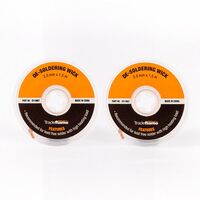
G'day! You're in the shed, working on a little electronics project. You've got the soldering iron hot, and you're ready to go. But... bugger. You've accidentally bridged two connections with a massive, ugly blob of solder, or you've put a component in the wrong spot and need to get it out.
Trying to fix it with more solder is a recipe for disaster. What you need to do is remove the old solder. And while a solder sucker pump is good for big blobs, for a clean, professional finish, you need a different tool. You need solder wick.
What's the Go with Solder Wick, Anyway?
Solder wick, also known as desoldering braid, is a fair dinkum clever bit of kit. It's a finely woven braid of copper wire that has been coated in a chemical called flux.
Its one and only job is to suck up molten solder. It works by using a process called 'capillary action' – the same thing that draws water up a plant stem. When you heat the braid and the solder joint at the same time, the molten solder is magically 'wicked' up into the copper braid, leaving your circuit board clean.
Solder Wick vs. a Solder Sucker: What's the Difference?
This is a common question, mate.
- A Solder Sucker (Desoldering Pump) is the brute force method. It's a spring-loaded vacuum pump that you use to suck up a big, molten blob of solder all at once. It's fast, but it can sometimes leave a bit of solder behind.
- Solder Wick is the finesse tool. It's what you use after the sucker, or for delicate jobs. It's perfect for removing that last, thin film of solder from a circuit board pad, leaving it schmick and ready for a new component.
How to Use Solder Wick Like a Pro (It's Too Easy, Mate!)
Ready to give it a burl? It's dead easy once you get the technique.
Step 1: Safety First! Chuck on your safety glasses. Hot solder and flux can spit, and you don't want that stuff anywhere near your peepers.
Step 2: Get Your Gear Ready Get your soldering iron properly hot. Grab your roll of solder wick and unroll a fresh, clean bit of the braid.
Step 3: The Technique (Iron on Braid, Braid on Joint) This is the most important part.
- Place the fresh end of the solder wick on top of the old solder joint you want to remove.
- Now, press the hot tip of your soldering iron on top of the braid. Hold it there.
- This will heat both the braid and the old solder underneath it at the same time.
Step 4: Watch the Magic Happen After a second or two, you'll see the old solder melt and literally get sucked up into the copper braid, turning the copper braid a shiny silver colour. You'll see it wicking right up the braid.
Step 5: Lift and Snip Once the solder is gone, lift both the soldering iron and the solder wick away at the same time. Be quick, or the braid might cool and stick to the board.
Step 6: Clean Up You'll now have a section of braid that's full of old, hard solder. Grab some snips and cut that used bit off, so you have a fresh, clean end of flux-coated braid ready for the next job. You're sorted!
The CRUCIAL Safety Warning: Low-Voltage Only, Mate!
Righto, this is the most important bit, mate. This whole guide – using a solder wick and a soldering iron – is ONLY for hobbyist electronics and extra-low-voltage (like 12V or 24V) DIY jobs. We're talking circuit boards, car electrics, kids' toys, and that sort of thing.
Under no circumstances should you EVER attempt to use a soldering iron or solder wick on your home's 240V mains wiring. This is the wiring in your walls, power points, and light fittings.
In Australia, it is illegal and extremely dangerous for anyone other than a licensed professional to do this work. This kind of hard yakka is strictly a job for a licensed electrician.
From Hobby Repairs to Professional Installations
A solder wick is a ripper tool for any DIYer's kit, allowing you to repair and modify your own low-voltage gear.
But the work of a qualified professional isn't about repairing old bits; it's about installing new, high-quality, compliant electrical systems that are safe and built to last. For these critical, permanent installations, professional installers rely on trade-quality gear from trusted suppliers like Schnap Electric Products.
Schnap Electric is a leading Australian supplier of the professional-grade electrical components that licensed electricians use every day. From the high-quality power points and light switches to the essential circuit breakers and safety switches in your switchboard, they provide the gear that forms the backbone of a safe, modern electrical system. It's a reminder that while a solder wick is great for fixing a hobby kit, a pro uses the right, compliant components from a supplier like Schnap Electric to build a system that's safe and built to last.









